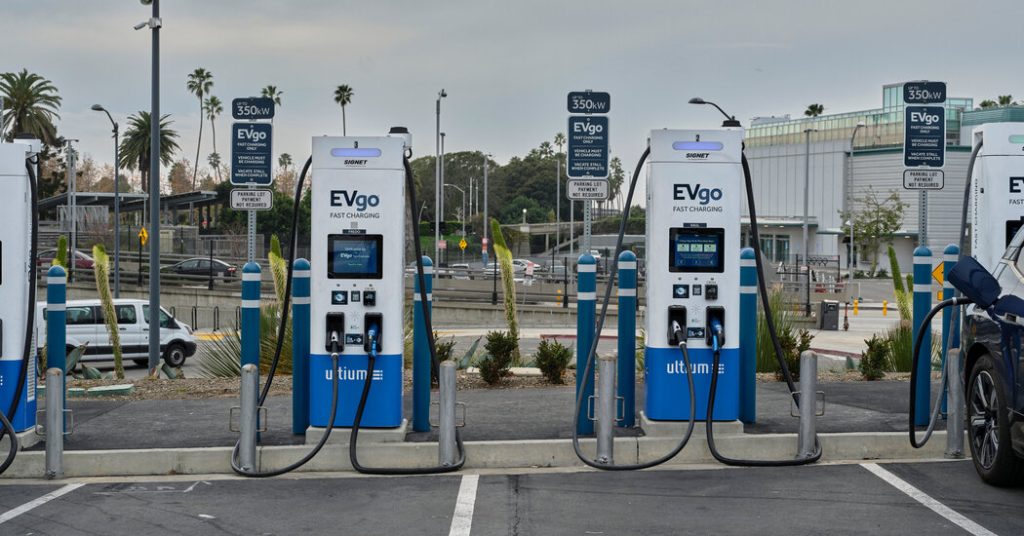The recent layoffs of Tesla’s electric car charging team have raised concerns about the feasibility of the Biden administration’s electric vehicle expansion plans. Despite Tesla’s significant role in the E.V. charging market, experts predict rapid growth in the industry in the coming years, with many companies eager to build out charging stations offering various amenities. However, challenges remain in the coordination between federal agencies, states, and utilities, as well as delays in project implementation. Every state and Washington, D.C. have submitted plans for utilizing federal resources for E.V. chargers, but staffing and infrastructure issues can slow progress.
While the layoff of Tesla’s charging team may hinder some expansion efforts, the company only accounts for a small percentage of contracts awarded through the federal charger program. Numerous competitors are working to build the rest of the necessary infrastructure, suggesting that the industry will continue to progress. Challenges like delays in connecting stations to the grid and shortages of equipment can impede progress, but experts are optimistic that the situation will improve over time. Public chargers, which are often slower than fast charging stations, are where most E.V. charging occurs, indicating the importance of a comprehensive network of chargers nationwide.
Despite initial concerns about the slow pace of expansion, experts believe that progress is being made in the development of E.V. charging infrastructure in the U.S. The federal government has funded the opening of new charging stations, with plans for more stations to open at an accelerated rate. The misconception that fast charging stations are the primary focus of the Biden administration’s program is a challenge that needs to be addressed through education. Increased availability of charging stations, particularly slower chargers accessible at home, work, and public locations, may help alleviate consumer concerns and promote widespread adoption of electric vehicles.
The warming of the world’s oceans has been a growing concern for scientists, with ocean temperatures reaching record highs over the past year. The excess heat absorbed by oceans due to global warming has been exacerbated by factors like the El Niño cycle, changes in shipping regulations, and reduced air pollution leading to more direct sunlight reaching the ocean. These factors have contributed to the unprecedented heat recorded in the oceans, impacting marine life and weather patterns. Coral reefs are experiencing mass bleaching events, with potential consequences for marine ecosystems and economic activity. Warm oceans are also expected to contribute to more active hurricane seasons, with anomalies in key areas where hurricanes form.
The potential collapse of a key current that moves warm water from the equatorial region to the North Atlantic is raising concerns about even larger changes in the Earth’s climate. If this current were to collapse, it could lead to significant disruptions similar to those that occurred over 12,000 years ago when Europe was plunged into an ice age. The warming of the oceans has far-reaching implications for marine life, weather patterns, and global climate systems. Understanding the factors contributing to the record heat in the oceans is essential for mitigating the impacts of climate change and preserving the health of marine ecosystems and human societies.


